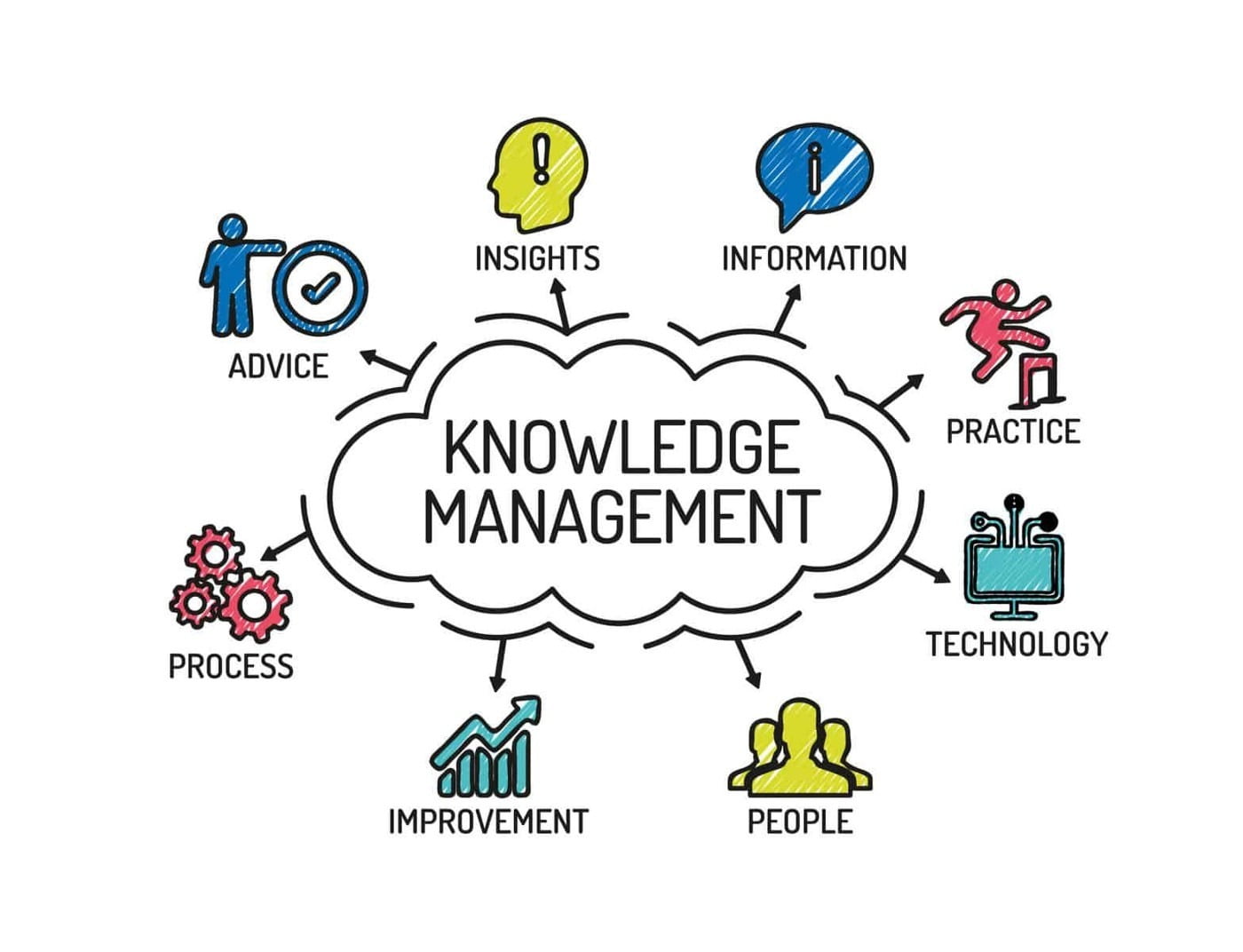ITIL (Information Technology Infrastructure Library) is an industry standard for IT service management, and it has become the go-to framework for organizations that need to manage their IT services. One of the critical components of ITIL is the Service Knowledge Management System (SKMS). An SKMS is a comprehensive repository of all the information related to IT services, including processes, procedures, and best practices. By leveraging SKMS, organizations can ensure that their service delivery is efficient and effective. In this article, we will explore an SKMS in detail and how it can help organizations achieve better service performance and customer satisfaction.
Related article: Benefits of Equipment Inventory Management Systems in 2023
What is Service Knowledge Management System?
A Service Knowledge Management System (SKMS) is a group of systems, tools, and databases needed to manage the knowledge and information related to IT service management processes. SKMS includes a knowledge base that stores information and knowledge about all of your processes, tools, and services. It also consists of a document management system, which manages your documents and other information resources. The Service Knowledge Management System supports the ITIL processes by providing accurate and up-to-date information about your processes, tools, and services.
SKMS can help you manage your IT knowledge and information more effectively. You will use the system as an IT manager to store, update, and manage data regularly. This system also allows team members to access data at any given point, making it an essential component for teams operating from different time zones.
Importance & Benefits of Service Knowledge Management System
Service Knowledge Management System (SKMS) is a critical element in the Information Technology Infrastructure Library (ITIL) framework. ITIL requires us to capture and organize information, parse that information into knowledge, and make that knowledge available to use as needed. The SKMS represents the total body of knowledge in the service management lifecycle. SKMS is responsible for managing the knowledge base of an organization’s IT service delivery processes and procedures. It includes storing, maintaining, and updating the knowledge base as new information is discovered or changes occur.
SKMS ensures that an organization’s IT service delivery processes are efficient and effective. By keeping the knowledge base up-to-date, SKMS helps to ensure that service providers can quickly and easily find the information they need to deliver services effectively. Additionally, SKMS can improve communication between service providers and customers by providing a centralized repository for information about IT services.
There are several benefits to implementing a Service Knowledge Management System within an organization. Some of these benefits include:
- Improved efficiency of IT service delivery processes.
- Reduced downtime and improved quality of service.
- Improved customer satisfaction due to better communication and more up-to-date information on services.
- Increased revenue due to improved efficiency and quality of service
Overall, Service Knowledge Management System is a valuable tool that can help organizations to improve the efficiency, quality, and customer satisfaction associated with their IT service delivery processes.
Stages of Service Knowledge Management System
There are several different stages of SKMS. These are:
Data and information layer
The first stage of the Service Knowledge Management System (SKMS) is gathering knowledge. In this stage, SKMS will identify and collect all relevant information and data from various sources. It could include interviewing employees, observing processes, and reviewing documentation.
As part of SKMS, this layer is responsible for storing all the data in IT service desks. This layer also includes the configuration management database (CMDB) and the known error database (KEDB). Information integration layer
Knowledge organization
The second stage of SKMS is organizing knowledge. SKMS will categorize and organize your collected information and data in this stage. It will help to make the knowledge base more accessible and easy to use. This layer gives structure and relationship to your data. Data is integrated into the service desk in this layer. You can, for example, access CIs and their relationships from various parts of the service desk, such as incident tickets.
The third stage of SKMS is storing knowledge. SKMS will create a centralized repository for all the collected information and data at this stage. This repository can be in the form of a database, intranet site, or document management system.
Knowledge processing
In the Knowledge Processing Layer, users can report information that can be analyzed. Its objective is to analyze, report, and monitor all information received from other SKMS layers. A large component of this layer is monitoring performance. This layer facilitates the monitoring of performance scorecards to help improve your team’s productivity. This layer can be used to determine whether your team members are meeting their performance goals.

Knowledge distribution
The fourth stage of SKMS is distributing knowledge. In this stage, SKMS will make the stored knowledge available to those who need it through training programs, online help systems, or intranet sites. In this layer, all the knowledge gathered and analyzed is presented to the end users. It is possible to use a self-service portal as a presentation layer. The knowledge is structured in a conceivable way, so it is easy to use and access. Users can get all the necessary knowledge visually and take advantage of other features like browse and search buttons.
Knowledge application
The last stage of SKMS is applying knowledge. You need to put the knowledge into context in IT service situations. You and your team are responsible for using personal judgment, experience, and expertise to properly apply knowledge in a way that allows you to run your IT service efficiently. In this stage, users will put the stored knowledge to use in their work. It could involve using it to solve problems or improve processes.
Knowledge maintenance
It is followed by maintaining the knowledge gathered in the previous stages. SKMS will monitor the stored knowledge to ensure it remains accurate and up-to-date through regular review processes or user feedback.
Example of Service Knowledge Management System
To understand how SKMS can help enterprises with their services, let us look at an example of how Vend, a retail management software company, utilizes its service knowledge management system.
Vend has an online knowledge base that supports an efficient and intuitive user interface that is easy for first-time visitors and power users. Vend has a user-centered design approach to essential knowledge management, so the most frequently searched for content is displayed at the top of pages, with a classification structure based on product areas for seamless navigation. This simple yet powerful interface is supported by a sophisticated service knowledge management program that’s taking place behind the scenes.
Agents have the power to create, improve and even share content with other agents in real-time, as well as make decisions on behalf of customers without being constrained by predetermined messages. This empowers them to become trusted content creators and knowledgeable problem solvers. As a result, Vend has seen a 650% increase in help center articles, a 29% increase in customer satisfaction, and a 40% increase in one-touch solutions since implementing SKMS.
Related article: What are the Best Practices to Improve the Incident Management Process?
Final note
In summary, Service Knowledge Management System (SKMS) is an essential component of ITIL that can help organizations streamline and improve their service delivery processes. By using the SKMS system to capture, store, manage and share knowledge throughout the organization, businesses can gain a deeper understanding of customer needs and how to deliver effective solutions more efficiently. With greater access to information and improved service quality, companies can ultimately benefit from increased customer satisfaction ratings while also reducing time spent on problem-solving activities.
FAQs
Is CMDB part of the Service Knowledge Management System?
Yes, CMDB is part of the service knowledge management system. And the SKMS is a system that captures, stores, and disseminates information about an organization’s services. SKMS aims to help organizations optimize their service delivery by providing accurate and up-to-date information about the services they offer. CMDB is a key component of SKMS, as it contains detailed information about an organization’s IT infrastructure configuration. This information can be used to identify and resolve problems with specific service components and to plan and implement changes to the infrastructure.
What are the 5 components of knowledge management?
SKMS is an integral part of ITIL used to manage, store, and distribute knowledge and information within an organization. The five components of SKMS are:
- Knowledgebase: A central repository for all information and knowledge related to the organization’s products and services. It includes both static and dynamic content, such as FAQs, how-to guides, manuals, and troubleshooting guides.
- Document management: Document management is a process for storing, organizing, and retrieving documents. It helps ensure that documents are accessible to authorized users and that they remain consistent over time.
- Content management: Content management refers to the process of creating, editing, storing, and publishing content. It includes tasks such as developing editorial calendars, managing workflows, and ensuring high-quality and up-to-date content.
- Change management: Change management is a process for tracking and managing changes to the organization’s products and services. It helps ensure that changes are made in a controlled and consistent manner, minimizing the risk of disruptions to the business.
- Configuration management: It is a process for tracking and managing the configuration of the organization’s products and services. It helps ensure that changes are monitored and controlled, minimizing the risk of disruptions to the business.
What are the ten principles of knowledge management?
The ten principles of knowledge management are:
- Make knowledge explicit.
- Create and capture knowledge.
- Make knowledge accessible.
- Make knowledge actionable.
- Validate and evolve knowledge.
- Structure knowledge for re-use.
- Foster a learning environment.
- Encourage communities of practice.
- Promote innovation.
- Continuously improve the system.
What are the top 5 barriers to knowledge management?
There are many barriers to knowledge management, but the top five are:
- Lack of a centralized repository: Without a centralized repository, it can be difficult to track and manage knowledge effectively.
- Lack of governance: Without governance, it can be difficult to ensure that knowledge is shared appropriately and used effectively.
- Silos: Silos can prevent information from being shared across departments and hinder knowledge management.
- Lack of incentives: Without incentives, employees may not be motivated to share their knowledge.
- Technical challenges: Technical challenges can make it difficult to implement and use knowledge management systems effectively.























